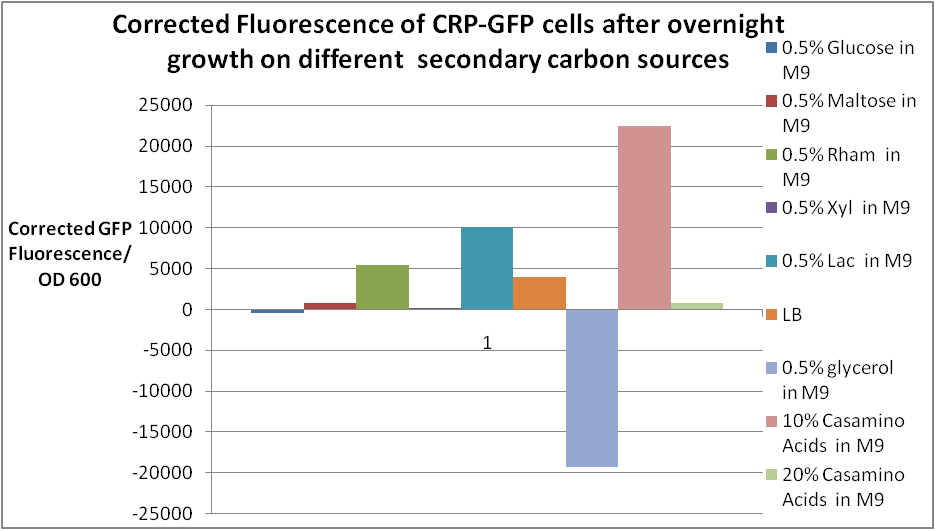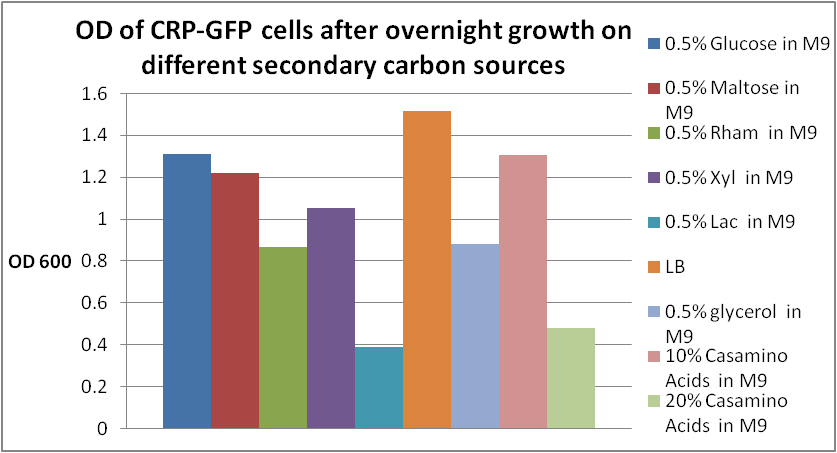Team:Imperial College London/Wetlab/Results/CRP and Media
From 2009.igem.org

Contents |
Expression of GFP by CRP-GFP cells in different media
CRP activity in different media
Background
We are using the PcstA promoter (BBa_K118011) to activate module 2 when the concentration of glucose is low. The cell then metabolises the secondary carbon source.
We have ligated the PcstA Biobrick (BBa_K118011) to the GFP reporter. This allows us to follow PcstA promoter activity by GFP fluorescence.
Aims
- To characterise the activity of PcstA under different secondary carbon sources
- Consequently, to select our secondary carbon source for further experiments where glucose concentrations can be varied
Experimental procedure
Cells were grown overnight for 18 hours at 225rpm shaking in the various different secondary carbon sources.
200ul of the cells were added to a 96 well plate. Fluorescence and Absorbance readings were recorded.
Results
Corrected Fluorescence

After overnight culture, the corrected fluorescence of glucose is almost negligible, showing that glucose represses the PcstA promoter strongly.
For all the other secondary carbon sources, 10% Casamino Acids in M9 shows the highest corrected fluorescence at 22000, while 0.5% Lactose in M9 is second at almost half the fluorescence.
An interesting point is why the fluorescence of 20% Casamino Acids in M9 is so much lower. We believe this to be due to toxicity of the overly high Casamino Acid content, shown also by the exceedingly low OD600 (refer below).
Cell growth

However, fluorescence is not the only consideration.
For effective encapsulation, not only must the promoter activity be strong, but there must also be enough cells expressing module 2 genes. Therefore, OD600 is also a critical factor.
For OD 600, the growth in LB is the highest at 1.5, explaining why it is the preferred medium for cell growth. OD600 of cells in 10% Casamino Acid in M9 is slightly lower at 1.3. A notable exception is 0.5% Lactose in M9, which has a exceedingly low OD of almost 0.4.
Conclusions
Due to the exceedingly low OD600 in 0.5% Lactose in M9, the medium cannot be used even though it induces relatively high fluorescence.
Our chosen medium from this experiment is 10% Casamino Acids in M9 media, which has the highest corrected fluorescence and also has quite a high cell growth rate.
 "
"



